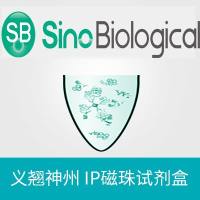Magnetic Fluids Their Applications to Medicine
互联网
17th December 2002
School of Metallurgy and Materials
The University of Birmingham
This half day meeting was the third held by the MedMag Network which continued the series of more focused meetings. Due to this being a relatively new and specialised subject area it was very difficult to predict the level of support.
The first presentation of the afternoon was given by Vijay Patel of Liquids Research Ltd. This was a good introduction to the afternoon’s seminars detailing the production and characterisation of ferro-fluids in addition to their established applications and the potential for their use in medicine. This was followed by an overview of biomedical applications of magnetic fluids from Quentin Pankhurst of University College London.
Ferro-fluids are stable colloidal suspensions of single domain particles, typically 10nm in diameter, of ferromagnetic or ferrimagnetic materials. The particles are typically Fe3O4 or Fe2O3 produced by co-precipitation:
2Fe(NO 3 ) 3 + Fe 3 SO 4 + 8NaOH → Fe 3 O 2 + 6NaNO 3 + Na 2 SO 4 + 4H 2 O
These particles are held in suspension in a carrier liquid by a surface active layer, the carrier liquid is selected depending on the final application and can be hydrocarbon, ester, perfluoropolyether, water etc. The magnetic fluids are characterised by means of VSM measurements, particle size and distribution measurements and viscosity measurements. Their stability is assessed qualitatively by using optical microscopy and quantitatively by sedimentometry.
|
Magnetic Separation this is used in protein purification, immunoassays, pre-processing in polymerase chain reactions. There are a number of commercial systems on the market, the principal of which is illustrated in figure 1. Magnetic particles are coated with a reagent which selectively attaches to the target cells when added to the cell suspension. After an incubation period the target cells are isolated by use of a magnetic field. This method offers several advantages over non-magnetic cell separation methods: |
|
|
Figure 1: Principal of magnetic separation. |
|
Immunoassays this is a group of methods that employ antibodies to measure the concentration of an analyte. The US National Research Laboratories Fabs (Force Activated BioSensor) concept is a cantilever based immunosensor which works by measuring interactions in much the same way as an AFM and consists of three steps, illustrated in figure 2: |
|
|
Figure 2: Fabs concept. |








